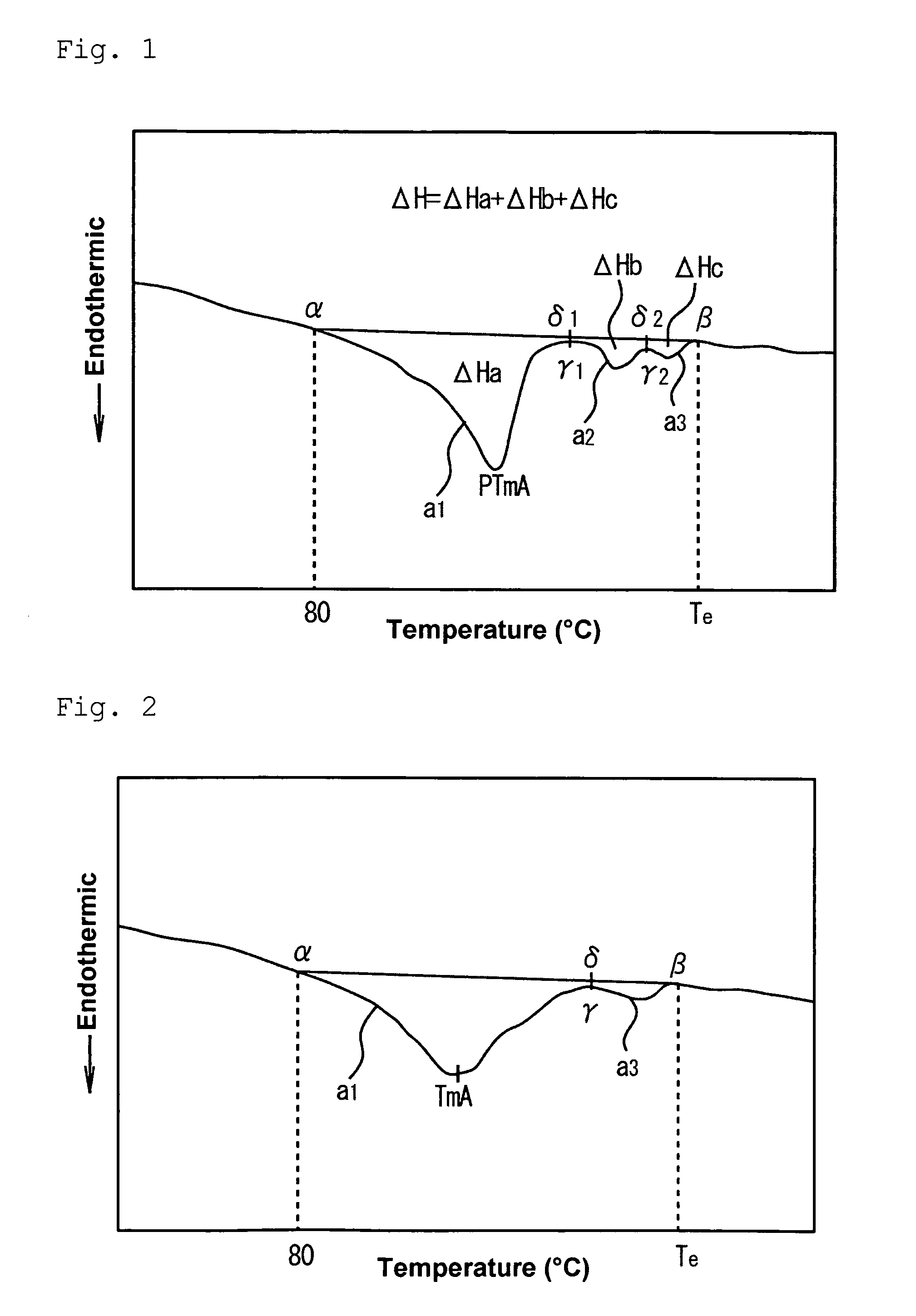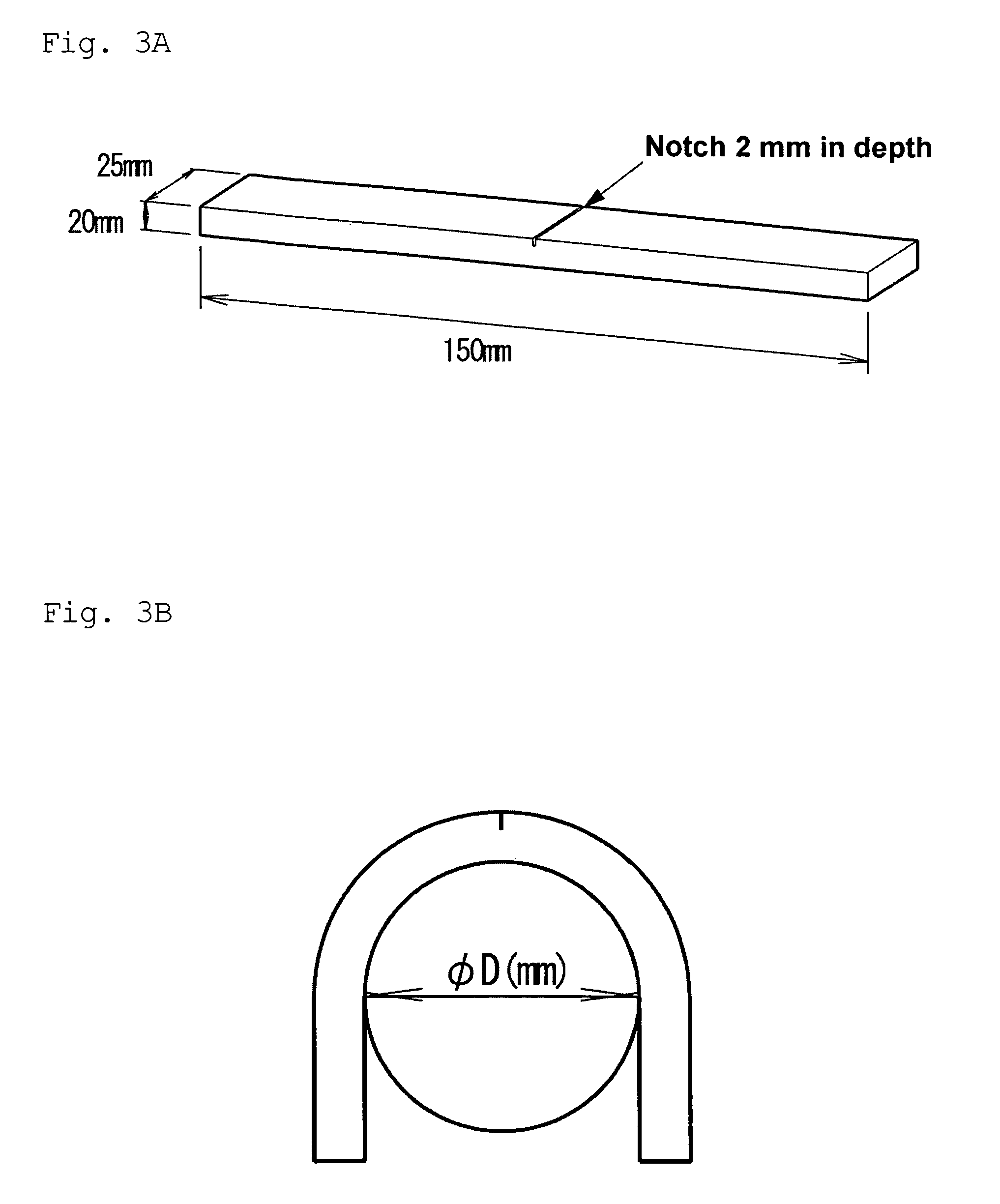Polypropylene resin foam particle and molding thereof
a polypropylene resin and foaming technology, applied in the field of polypropylene resin foamed beads and molded objects, can solve the problems of increasing the energy cost of use, complicated process, and complicated equipment used for this coating, and achieves superior secondary foaming ability and mutual fusibility, and reduces the clamping pressure of the molding machin
- Summary
- Abstract
- Description
- Claims
- Application Information
AI Technical Summary
Benefits of technology
Problems solved by technology
Method used
Image
Examples
examples
[0121]The present invention will be explained below by way of Examples and Comparative Examples.
[0122]The base resins used in these Examples and Comparative Examples and their natures are shown in Table 1 below.
[0123]
TABLE 1EthylenecontentMFRAbbreviationCatalystType of base resin(wt %)(g / 10 min)Melting pointResin 1MetallocenePropylene / ethylene17142typerandom copolymerResin 2Ziegler typePropylene / ethylene2.710145random copolymerResin 3MetallocenePropylene / ethylene2.87135typerandom copolymerResin 4MetallocenePropylene / ethylene3.57125typerandom copolymerResin 5Ziegler typePropylene00.5162homopolymerResin 6Ziegler typePropylene04165homopolymerResin 7MetallocenePropylene / ethylene3.525127typerandom copolymer
examples 1 to 6
, Comparative Examples 1 to 6
Production of Polypropylene Resin Foamed Beads
[0124]A polypropylene resin described in Table 1 was melt and kneaded in a formulation shown in Table 2 or 3 together with 500 ppm by weight of zinc borate in the following starvation miscible operation condition by using a 65 mmφ uniaxial extruder. The kneaded product was extruded strand-wise from small holes of a nozzle attached to the end of the extruder and cooled in a water bath. The strand was cut into pieces having a weight of about 1 mg and the obtained pieces were dried to obtain resin pellets. The starvation miscible operation condition of the extruder relates to measures for kneading so that resins largely differing in melting point and melt viscosity are well dispersed by the starvation miscible method. In the general full operation condition, the amount of the resin to be discharged from the extruder is determined in the condition that the raw material supply section of the extruder is filled wit...
PUM
| Property | Measurement | Unit |
|---|---|---|
| temperature | aaaaa | aaaaa |
| temperature | aaaaa | aaaaa |
| melting point | aaaaa | aaaaa |
Abstract
Description
Claims
Application Information
 Login to View More
Login to View More - R&D
- Intellectual Property
- Life Sciences
- Materials
- Tech Scout
- Unparalleled Data Quality
- Higher Quality Content
- 60% Fewer Hallucinations
Browse by: Latest US Patents, China's latest patents, Technical Efficacy Thesaurus, Application Domain, Technology Topic, Popular Technical Reports.
© 2025 PatSnap. All rights reserved.Legal|Privacy policy|Modern Slavery Act Transparency Statement|Sitemap|About US| Contact US: help@patsnap.com


